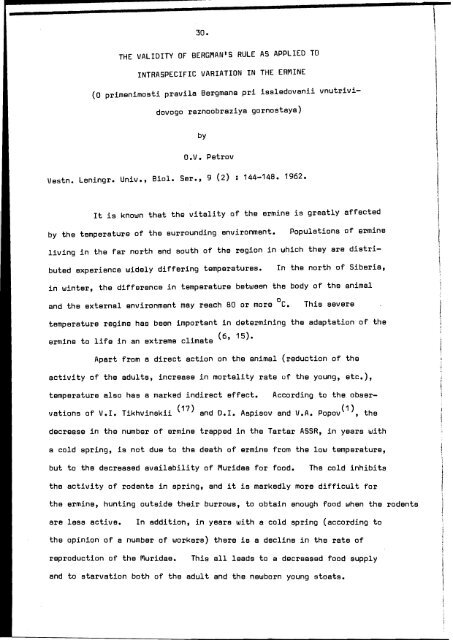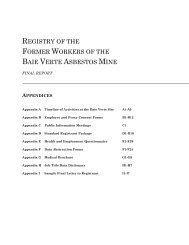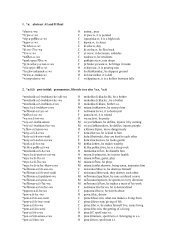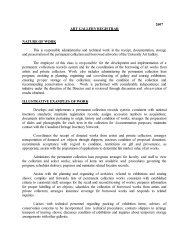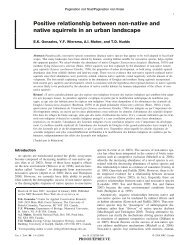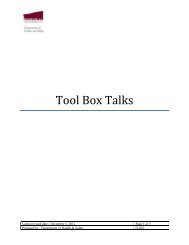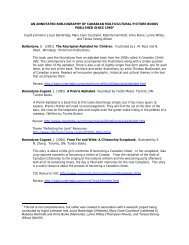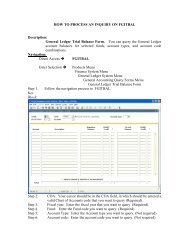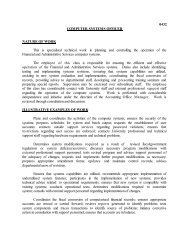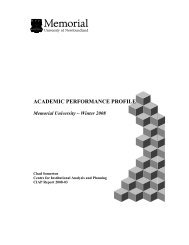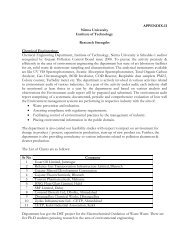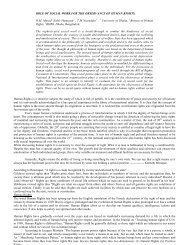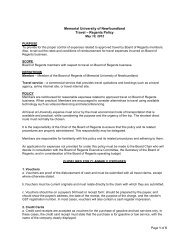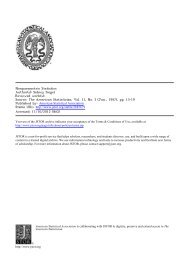- Page 2 and 3: BIOLOGY " OF MUSTELIDS SOME SOVIET
- Page 4 and 5: 2 12. L.S. Ryabov: HeKoTopRe Bospac
- Page 6 and 7: at 4 Bart IV Bathologr Page 14. N.P
- Page 8 and 9: \ I 6 Quotations in the text to a n
- Page 10 and 11: 8. the regions inhabited by the nor
- Page 12 and 13: 10. larger and longer-tailed muthwa
- Page 14 and 15: 12. putgriue (ArctoQale) pygmaeus,
- Page 16 and 17: 14. the weasels from these regions.
- Page 18 and 19: 16. Sub-species: 1 • Mustela niva
- Page 20 and 21: 18. the Caucasus. In 1911, Satunin
- Page 22 and 23: 20. (M.10.3), the postorbital width
- Page 24 and 25: orbital constriction is 1.5-7.8 mm
- Page 26 and 27: 24. 14.0-16.8 mm (M. 15.1) in the f
- Page 28 and 29: the length of the tail 37-60 mm (M.
- Page 30 and 31: 28. K A 1907 Mammals of the North-E
- Page 34 and 35: 32. the error in a~empting to find
- Page 36 and 37: 34. Table 2. Intraspecific variatio
- Page 38 and 39: 36. (4) In the desert regions of Ce
- Page 40 and 41: 38. 9. Naumov, N.P. 1955. Ekologiya
- Page 42 and 43: 40. index Z, (e) equal to 18.1 per
- Page 44 and 45: AGE VARIATION G.D. Dul'keit (loc.ci
- Page 46 and 47: ~-------- -- TABLE 1. Sarial No. 1
- Page 48 and 49: 46. TABLE 2. Measurements af Female
- Page 50 and 51: 48. The ermine and, in particuler,
- Page 52 and 53: 50. the formula were as follows : I
- Page 54 and 55: 52. is also a small increase with a
- Page 56 and 57: 54. REfERENCES 1. Ognev~ 5.1. 1929.
- Page 58 and 59: 56. differences due to sex and age
- Page 60 and 61: 58. associated by Teplov with the f
- Page 62 and 63: 60. transgressed by one sex or the
- Page 64 and 65: 62. Table 2 (continued) No. Dimensi
- Page 66 and 67: 64. Table 3 ( continuad) ND. Dimens
- Page 68 and 69: --------------- 66· TABLE 5. Diffe
- Page 70 and 71: 68. The teble and figures show that
- Page 72 and 73: 70. bullae, height of the foramen o
- Page 74 and 75: 72. TABLE 7. Sexual dimorphism of a
- Page 76 and 77: 74. narrower and lower in the facia
- Page 78 and 79: 76. REFERENCES Aspisov, 0.1., and P
- Page 80 and 81: 78. Ushakov, V.E. 1930. from the li
- Page 82 and 83:
-------------------~------------ 80
- Page 84 and 85:
82. The relative weight of the musc
- Page 86 and 87:
84. A CONTRIBUTION TO THE ECOLOGY O
- Page 88 and 89:
$ 86. Diagnosis The winter coats of
- Page 90 and 91:
88. Numbers Trappers can not make a
- Page 92 and 93:
~. show this relationship: but repl
- Page 94 and 95:
92. Voles (Clethrionomys, Microtus)
- Page 96 and 97:
spruces, where they were vulnerable
- Page 98 and 99:
96. diet of Mustela nivalis from ot
- Page 100 and 101:
98. THE PROBLEM OF SEX RATIO IN ERM
- Page 102 and 103:
100. commercial seasons): (1) Aktuy
- Page 104 and 105:
102. The excess of males over femal
- Page 106 and 107:
104. INFLUENCE OF TEMPERATURE ON TH
- Page 108 and 109:
1~. Observations of ermine trails e
- Page 110 and 111:
108· DATA ON THE BIOLOGY or THE ER
- Page 112 and 113:
TABLE 1. Data on food of ermine Mat
- Page 114 and 115:
I Ii I II. Reproduction Indications
- Page 116 and 117:
114. Furthe~on 19.7.36, a male ermi
- Page 118 and 119:
116. TABLE 3. Sex ratio of ermine.
- Page 120 and 121:
118. (a) STOATS AND WEASELS AND THE
- Page 122 and 123:
120. \ I 1 The results show that ea
- Page 124 and 125:
122. @ o Permanent sleeping quarter
- Page 126 and 127:
124· It is interesting to compare
- Page 128 and 129:
126. they can run absolutely incred
- Page 130 and 131:
128. in the woods, in cultivated la
- Page 132 and 133:
130. Fig.8 The prints of stoats and
- Page 134 and 135:
AGE DETERMINATION AND AGE STRUCTURE
- Page 136 and 137:
(3) 134· the condylobasal length -
- Page 138 and 139:
136. the ratio of the interoribtal
- Page 140 and 141:
Table 1. Measurements of skulls of
- Page 142 and 143:
140. Table 3. Measurements of Sagit
- Page 144 and 145:
142. Comparison of the results of t
- Page 146 and 147:
144. REFERENCES 1. Paramonov, A.A.
- Page 148 and 149:
146. dimensions increase rapidly.
- Page 150 and 151:
148. pine martens exhibit all these
- Page 152 and 153:
150. and 14.380 g); was 0.18 g/mm;
- Page 154 and 155:
152. one molar were still small mi
- Page 156 and 157:
palatinum are also retained. In yea
- Page 158 and 159:
ange is 3.0 to 4.0 mm. The sagittal
- Page 160 and 161:
158. ANALYSIS OF THE AGE STRUCTURE
- Page 162 and 163:
When my data were analysed, using t
- Page 164 and 165:
162. In winter there is a substant
- Page 166 and 167:
, 164 Large variations in age rati
- Page 168 and 169:
p 166. animals changes little, the
- Page 170 and 171:
168. REFERENCES Grakov, V••N 19
- Page 172 and 173:
170. EFFECT OF HELMINTH INVASIONS
- Page 174 and 175:
172. Table 2. Species and distribu
- Page 176 and 177:
174. + denotes the presence of a p
- Page 178 and 179:
176. brain. In some individuals we
- Page 180 and 181:
• 178. is the final and evidently
- Page 182 and 183:
180. The numbers of "mice" in the
- Page 184 and 185:
182. undertaken, to determine the
- Page 186 and 187:
184. Autopsy and bacteriological ex
- Page 188 and 189:
186. In all four dead ermines auto
- Page 190 and 191:
188. CHARACTERISTICS AND CAUSES OF
- Page 192 and 193:
190. supplies of ermine became mor
- Page 194 and 195:
Table 2. Food of the ermine in Nort
- Page 196 and 197:
194· I n J. '" ,I ' , C1l '\ ,'\
- Page 198 and 199:
196. In the fur harvest in Nov~sib
- Page 200 and 201:
198. species were recorded in 1930-
- Page 202 and 203:
200. in the Bashkir ASSR. In Kazak
- Page 204 and 205:
202. Of the parasitic diseases, skr
- Page 206 and 207:
204. raccoon to become acclimatised
- Page 208 and 209:
Table 4. 206. Results of fox-track
- Page 210 and 211:
-------------~ ------- 208. Adult
- Page 212 and 213:
210. not now always the deciding fa
- Page 214 and 215:
212. Belyshev, E.F. 1934. (Migratio
- Page 216 and 217:
214. , Naumov, N.P. 1934. (Biology
- Page 218 and 219:
216. INfECTION o~ THE PINE MARTEN (
- Page 220 and 221:
218. the physiology of the host, d
- Page 222 and 223:
220. less infected than males (by
- Page 224 and 225:
222. Table 4. Filaroides infection
- Page 226 and 227:
224. winter; the mean intensity of
- Page 228 and 229:
226. Lavrov, N.P. 1944. The role o
- Page 230 and 231:
228. bronchi. The posterior end of
- Page 232 and 233:
2;0. Experimental infestation of th
- Page 234 and 235:
232. collected from the same marsh
- Page 236 and 237:
234 mature stage in the polecat las
- Page 238 and 239:
of the frontal sinuses. By active m
- Page 240 and 241:
238. We used Berman's method to inv
- Page 242 and 243:
240. Subsequent experiments establ
- Page 244 and 245:
242. Bibliography of other transla
- Page 246 and 247:
244. (3) Available from Elton Libr
- Page 248 and 249:
246. NASILOV, S.B. 1972. [Feeding o
- Page 250 and 251:
(90 20 40 ._"" \:;)'./ J ----J ( 1,
- Page 252 and 253:
250. p.248 Key to lVJaps 1 Norway
- Page 254 and 255:
252. 121 Semipalatinsk 122 Altai
- Page 256 and 257:
254. Number Place Co-ordinates Pag
- Page 258 and 259:
Number on map 10 141 46 79 70
- Page 260 and 261:
258. Number Place Co-ordinates on
- Page 262 and 263:
260. Subject Index Activity, 57' 94
- Page 264 and 265:
262. Surplus kills, 93, 111, 128 T
- Page 266 and 267:
Mice, 91-92, 109, 121, 127, 191-193
- Page 268:
266. Molluscs, 174, 217 Ag£iolim


